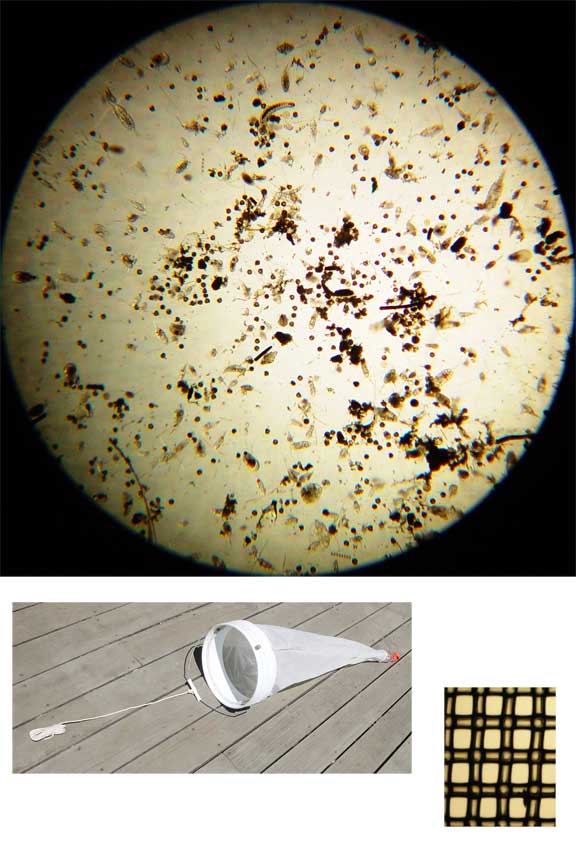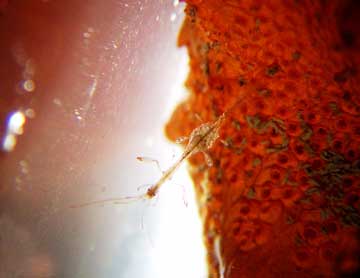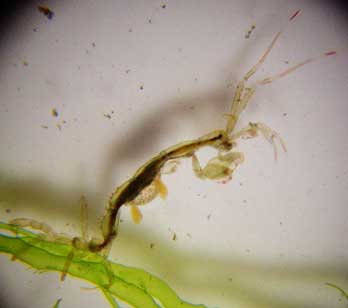Neighbors
Figure D-1. Plankton caught with a 100 micron net off the Arques dock.
About half of these organisms are juvenile forms of sessile (immobile) organisms, e.g. mussels, crabs, barnacles, star fish, sea urchins. The rest are true pelagic (free floating) animals and plants, e.g. copepods, diatoms. A tunicate “tadpole” swims with these neighbors and is often in such a catch, but I don’t see one here.
The panel at lower left shows the net, made of the rim of a 5 gal. paint bucket at the large end, a soy sauce bottle at the small (collection) end, and Nitex netting. An enlarged view of Nitex is seen on the right. It is made in many precise meshes, here the openings are 100 microns (0.1 mm) wide.
Figure D-2. It takes a village.
A B. violaceus colony lives in the ocean with thousands of other species of plants and animals, some of which it eats while others eat it. Some neighbors just use the colony as real estate. The fecal pellets (brown sausage-like objects), demonstrate that someone has been crawling on the surface, most likely amphipods, a type of crustacean related to shrimp.
In this photo we see another crustacean, a Caprellidea. These animals look like a preying mantis, and catch prey in the same manner. They have six short legs (which you can’t see in this image) at the end of their “tail” which are used to attach to a support, here the B. violaceus colony. Prey that swim or float by are captured by the claws at the ends of the two long arms, just as a mantis does. Some Caprellidea are more than a centimeter long, and can easily be seen by the unaided eye, as long as you know what you are looking for and are patient.


